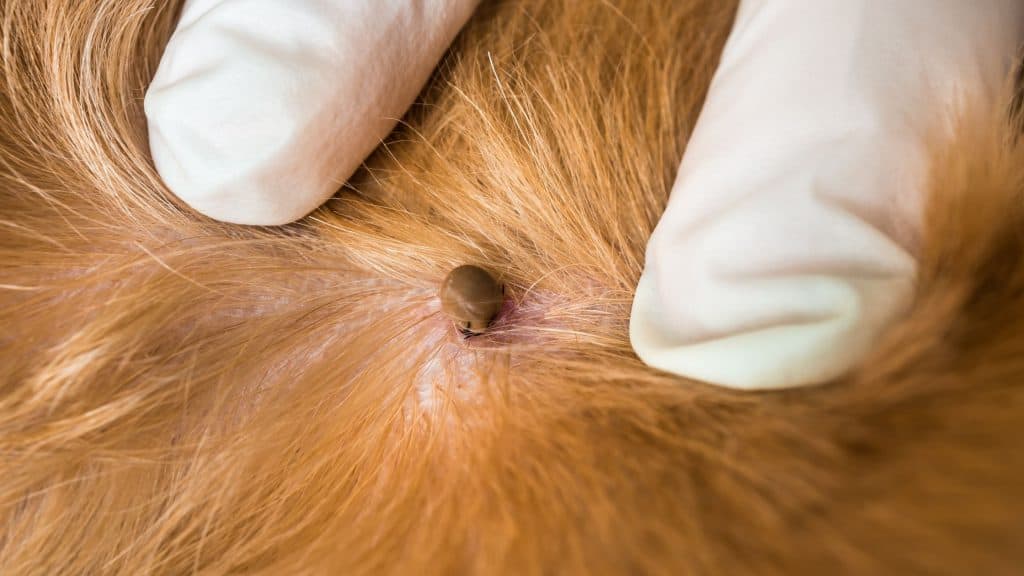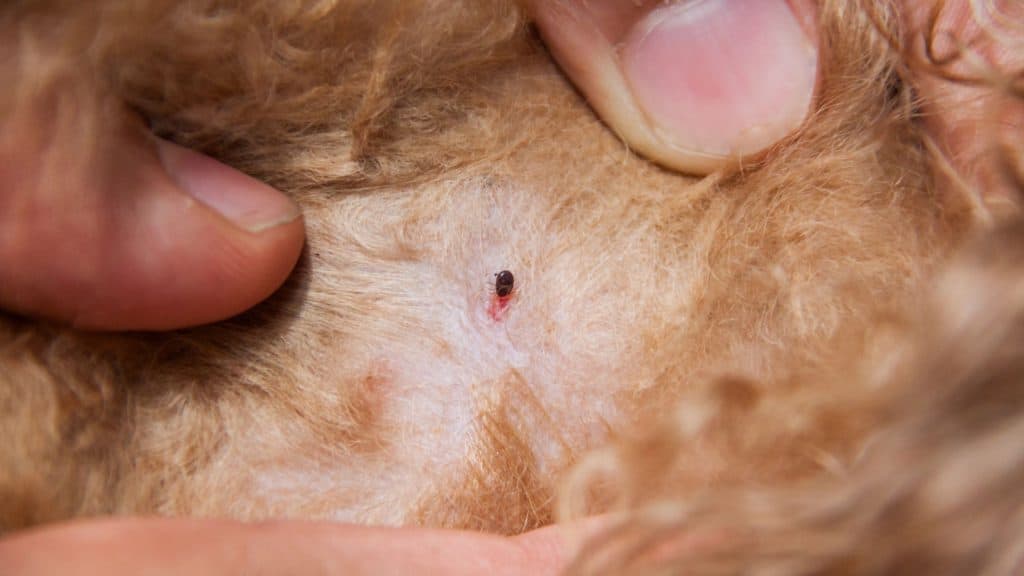Unfortunately, our beloved pups can be susceptible to the annoyance of fleas and ticks, particularly when living an active lifestyle! This is especially true in Los Angeles where these persistent pests can be prevalent throughout the year. These pesky little bugs not only cause discomfort and itchiness for our furry friends, but they can also transmit diseases, posing a significant disruption to both you and your pup’s daily lives. It’s crucial to stay informed about the facts and take proactive measures to protect yourself and your adorable fur baby from the wrath of fleas and ticks.

Fleas
Symptoms: Intense itching, extensive skin damage, biting, licking, or scratching. Also, keep an eye out for flea “dirt”; tiny dark specks that look like dirt, but are actually flea feces.
Incubation Period: There are four stages in the life cycle of a flea: egg, larva, pupa, and adult. It takes at least one or two months until all the life cycle stages have run through their course.
Treatment: Treat the adult fleas living on your pet with flea and tick shampoo, sprays, dips, spot-on medications or prescription flea and tick treatments from your veterinarian.
Recovery: An infestation may take between six weeks and three months to eliminate. To prevent re-infestation, wash all dog beds and soft dog toys in hot, soapy water. Meanwhile, wash your own bed and vacuum anywhere your dog frequently lays.
How to prevent: Flea preventatives kill fleas that come in contact with your dog but they do not provide a protective force field. To truly combat fleas, clean your dog’s belongings and house and spray down your landscaping around your home.
Fitdog policy: Take flea preventative medication and receive a flea bath before returning to daycare. If we find fleas on your dog, we will give them a flea bath and charge to your account.
Interesting Fact: 90% of fleas life cycles are outside of your dog (that means they are living in your house or yard). Read more flea facts here.

Ticks
Symptoms: Licking and chewing; red, inflamed skin; pale gums and lethargic; scabs; head shaking.
Incubation Period: Tick-borne disease can be transmitted within 3 – 6 hours of a tick bite.
Treatment: Use a pair of fine-point tweezers or tick-specific tweezers to remove a tick. To remove, gently pull straight upward, in a slow, steady motion. This will prevent the tick’s mouth from breaking off and remaining embedded in the skin. After disposing of the tick, gently clean the site of tick attachment with soap and water.
Recovery: Improved health usually begins within 24 hours and most dogs are completely recovered within 72 hours.
How to Prevent: Keep your dog on flea and tick prevention year-round. There are very effective oral prescription products available, including Nexgard and Bravecto, that will provide great protection against fleas and ticks. For over-the-counter prevention, Frontline Plus or a Seresto collar are also an option.
Fitdog policy: Take flea & tick medication and make sure all ticks are removed before returning to daycare.
Interesting Fact: Ticks aren’t just a problem outdoors. The brown dog tick is capable of completing its entire lifecycle indoors.

More About Fleas and Ticks
According to Cynthia Hervatic, DVM, fleas and ticks can lead to various diseases, including tapeworm, anemia, and in rare cases, even the plague. Additionally, they can cause conditions like Typhus, autoimmune diseases, hot spots, ear infections, and potentially even inflammatory bowel disease and acral lick dermatitis.
It’s crucial to be aware that many dogs are allergic to fleas. Dr. Hervatic explains that they may develop a hypersensitivity reaction, resulting in red, inflamed skin with possible crusting, hair loss, and pustules resembling pimples. This skin infection is a consequence of self-trauma. Commonly, you’ll find lesions on the lower back, tail, thighs, and abdomen. Surprisingly, only a few fleas can trigger significant problems, often going unnoticed by owners.
To prevent fleas and ticks, it’s important to inspect your pet’s coat after outdoor activities. Dr. Hervatic strongly emphasizes the need to administer monthly flea preventatives. Using parasite prevention products consistently throughout the year is also highly beneficial. These products are available in the form of shampoos, rinses, sprays, chewable tablets, and topical spot-on treatments.
Updated on March 10, 2023.
